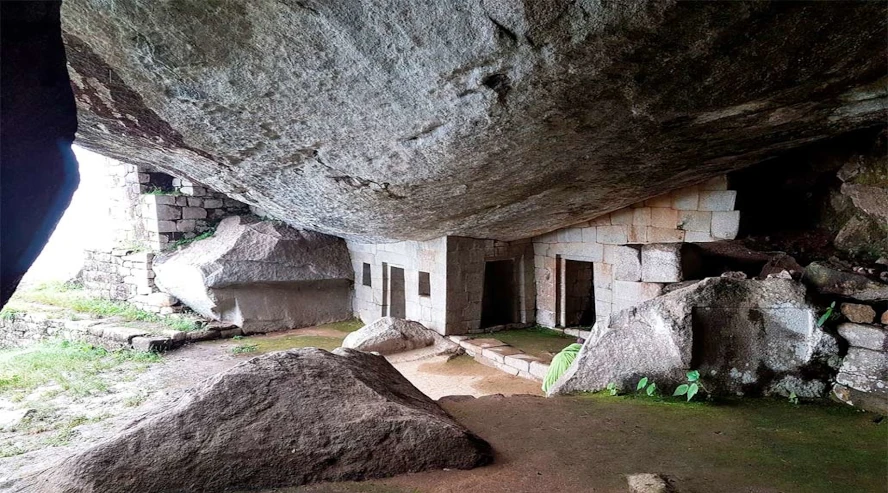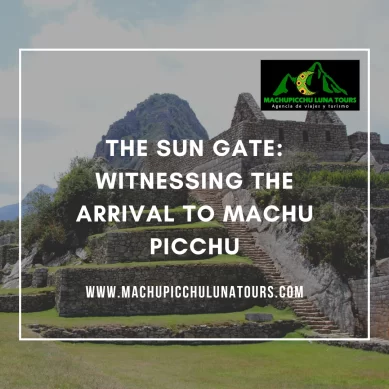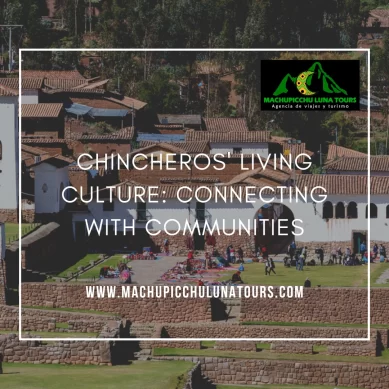Machu Picchu, Peru’s iconic Inca citadel, has long fascinated explorers and historians. Within its majestic confines lies the Temple of the Moon, a lesser-known yet equally captivating sanctuary. This ancient edifice, shrouded in mystery, beckons adventurers to uncover its secrets.
Steeped in legends and surrounded by the towering Andes, the temple offers glimpses of Inca spirituality. Its intricate stonework and architectural genius mirror the civilization’s prowess. As we delve deeper, the Temple of the Moon unfolds its enigmatic tales.
Join us on a journey through time. Discover the rituals, beliefs, and stories intertwined with this sanctuary. Experience the awe and wonder of Machu Picchu’s hidden gem.
The enigmatic Temple of the Moon: Historical significance and cultural context
Machu Picchu stands as a testament to the Inca Empire’s brilliance. Yet, among its grand structures, the Temple of the Moon stands distinct. Its mystique offers insights into ancient Inca beliefs.
Unlike the prominent Temple of the Sun, the Temple of the Moon remains more secretive. It nestles away from the bustling tourist trails. This positioning, perhaps, signals its special role.
The Temple of the Moon showcases intricate masonry. These stonework patterns hint at astronomical and ritual purposes. Historians believe the Incas used it for moon-related ceremonies.
Its architecture complements nearby sites, like the Temple of the Condor. Together, they form a cohesive narrative of Inca spirituality. Each temple underscores a particular aspect of Inca deities.
The moon, in Inca belief, was a significant deity. She was “Mama Killa”, the sister-wife of the sun god. This temple was likely her dedicated sanctuary.
While the Temple of the Sun celebrated solar events, the Moon Temple revered the nocturnal cycles. It acted as a counterbalance, highlighting the duality in Inca beliefs. Day and night, sun and moon, life and death.
Cultural experts often link this duality to Andean cosmology. In this worldview, opposites exist in harmony. The Temple of the Moon embodies this principle in stone.
Today, as explorers tread its ancient grounds, they remind us of a culture deeply attuned to nature’s rhythms. The Incas understood, respected, and revered these patterns. The temple stands as a monument to this understanding.
The Temple of the Moon isn’t just an architectural wonder. It provides a window into the heart of Inca spirituality. Through its stones, we connect with a civilization’s profound beliefs.

A journey through the Temple’s intricate architecture and sacred spaces
Machu Picchu showcases Inca architectural prowess in its entirety. The temple, however, holds special intrigue for many. It’s an epitome of detailed craftsmanship and purpose.
Wandering through its corridors, one witnesses intricate stone masonry. Every carve and niche seems intentional, echoing tales of yore. The temple’s layout resonates with both functionality and spirituality.
One of its wonders is its alignment with celestial events. For instance, during certain phases of the moon, it illuminates specific chambers. This reveals its potential purpose as an astronomical observatory.
Close by, the towering Huayna Picchu looms. Some believe the temple’s design harmonizes with this mountain’s silhouette. This strategic positioning amplifies the temple’s mystical ambiance.
Inside, various sacred spaces beckon exploration. Altars, likely used for rituals, dot its expanse. Every chamber carries an aura of reverence and respect.
Near the temple’s heart lies the Intihuatana Stone. Often termed as the “hitching post of the sun,” it’s an enigma. Historians speculate it functioned as an astronomical clock or calendar.
Arches throughout the temple demonstrate Inca engineering skills. They not only provide aesthetic appeal but also structural stability. Each arch tells a story of genius builders of the past.
Windows within the temple are not mere openings. They align with specific celestial events, further highlighting the Inca’s astronomical inclinations. These windows bridge the earthly realm with the cosmos.
The temple’s stairways, too, deserve admiration. They facilitate movement, yet seem to blend seamlessly with nature. Every step taken feels like a journey back in time.
This temple is more than stone and mortar. It’s a testament to the Inca’s understanding of the universe. Through its architecture, we glimpse a civilization’s wisdom and reverence.

The Temple of the Moon today: Preservation efforts and visitor experience
The Temple of the Moon still stands, majestic as ever. However, it now faces modern challenges. Preservation has become paramount.
Time and exposure have worn its intricate masonry. Yet, dedicated teams work tirelessly to counteract these effects. Their efforts focus on restoring and maintaining its original grandeur.
Modern technologies assist in these endeavors. They help identify vulnerabilities and guide restoration methods. These tools ensure minimal interference with the temple’s historical integrity.
Visitor management is another crucial aspect. As tourism grows, crowd control ensures the site’s preservation. Guided tours, with limited numbers, offer in-depth insights without overwhelming the space.
The visitor experience has evolved too. With augmented reality tools, the past comes alive. Historical reenactments, through digital mediums, paint vivid pictures of ancient rituals.
Interpretative boards pepper the site. They provide information on the temple’s historical significance and architectural brilliance. Knowledgeable guides further enhance this educational journey.
Walking through the temple is transformative. The blend of ancient stone and modern technology creates a unique experience. One can almost feel the whispers of Inca priests.
Surrounding the temple, lush green landscapes captivate the senses. Nature, history, and culture meld seamlessly, offering a holistic experience. The ambiance is both serene and enlightening.
Yet, the adventure doesn’t end here. For those yearning for more, other experiences await. Dive deeper into the cosmic connection with the Waqrapukara Stargazing Tour. Marvel at the celestial wonders from ancient stargazing platforms.
Or, explore more of the Inca world. Take the Machu Picchu Full Day Trip from Cusco. Experience history, nature, and culture in a single day’s adventure.
The Temple of the Moon today beckons all. Come, witness history and partake in its preservation. Your journey of discovery awaits.












